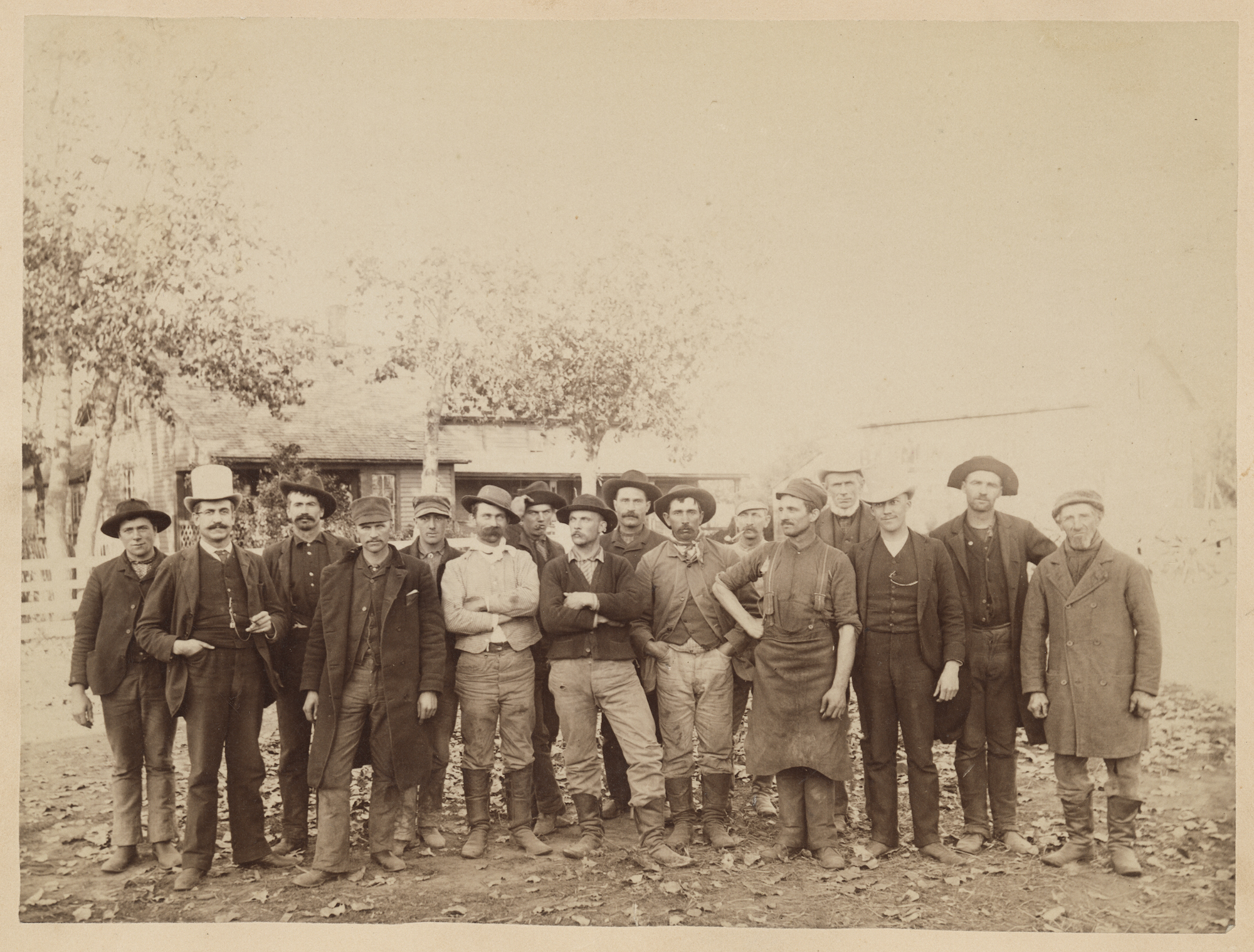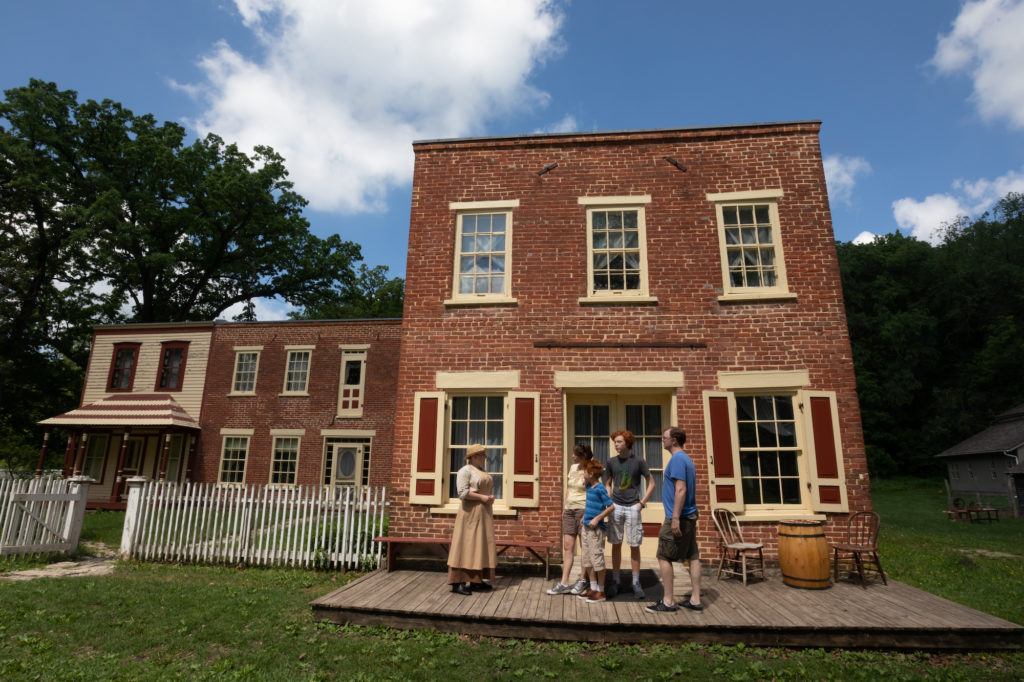The Minnesota Historical Society cares for 26 historic sites around the state, including an entire former town: Historic Forestville, located in southeastern Minnesota on the Root River.
A growing community in the mid-1800s, it had become a virtual ghost town by the end of the 19th century.
Before Forestville existed, Native Americans lived in and traveled through southeastern Minnesota for thousands of years. When Europeans arrived in the late 1600s, the Dakota people controlled much of the area with several other Native communities also moving through the region, such as the Ho-Chunk, Ioway, Meswaki and Fox.
Forestville’s founding was the direct result of the 1851 Treaties of Traverse des Sioux and Mendota between several Dakota bands and the U.S. government.
At the time, the Dakota were struggling to support their people through hunting and trade, and some groups felt that selling their land was a way to gain resources to sustain their communities. As a result, the U.S. gained control of most of southern and western Minnesota and opened 24 million acres to settler-colonists.
Robert Foster and friends
Within a decade, more than 100,000 people had moved to the area, which today is about an hour’s drive south of Rochester and located inside the scenic Forestville/Mystery Cave State Park.
Forestville traces its start to the summer of 1853 when Robert Foster traveled to the area on foot from Decorah, Iowa. There he staked land claims on the Root River for himself, his brother and two brothers-in-law, William and Felix Meighen.
Foster and Felix Meighen quickly decided to open a store together on the new property. They traveled to Galena, Illinois, to buy $700 in goods to stock the store — the equivalent of about $20,000 today — and then brought the goods up the Mississippi by steamboat and then another 50 miles by oxcart to the Forestville site.
In its first few years, the general store drew customers from up to 50 miles away. Soon, other businesses started cropping up in Forestville. According to an 1857 census, the young town included six carpenters, two cabinetmakers, a blacksmith and a brickmaker, indicating that construction was ongoing in the new town.
A stagecoach stop
By 1860, Forestville had formed a township government with more than 150 inhabitants and 20 houses. Area farmers would come to town to purchase goods, sell produce and send their children to school. The town also saw regular out-of-town travelers on the stagecoach route between St. Paul and Dubuque, Iowa.
Throughout the 1860s, a new form of transportation crept closer to Forestville: the railroad. Several communities were surveyed for a potential route through southeastern Minnesota. In 1868, the Southern Minnesota Railroad opted to bypass Forestville and run its route north through Wykoff and Spring Valley.
Losing out on a railroad stop proved a turning point for the town. Some residents moved away to the new railroad centers, and local markets shifted away from Forestville. Plus, new rail travel decreased the number of stagecoaches coming through town. The town’s population fell to 68 people by 1870, and slipped to 55 in 1880.
Foster left his store partnership with Felix Meighen to pursue farming full time, and William Meighen moved a few miles away to Carimona Township.
Making do without a railroad
Felix Meighen and his family stayed in Forestville, however, and soon began expanding their property. Farmers would frequently purchase goods from the family’s store on credit, and if they couldn’t pay their debts, the Meighens would grant a loan with high interest, secured by a mortgage on the farmer’s property. If farmers defaulted, the Meighens could foreclose on the land.
By 1889, due to those foreclosures and cheap and available land left behind by departing settlers, the Meighens came to own the entire town of Forestville. It became a company town with a large farming operation, with the Meighens hiring men to work in the fields and women to work in the family home. Workers could rent homes in Forestville and were paid in credit at the general store.
Felix died in 1896, and his only son, Thomas, took over the family operations. But Thomas was increasingly involved in work outside of town, including local politics and serving as president of the First National Bank in Preston. By 1905, he and his family had moved to Preston. The Meighen store had also ceased to be profitable, and it closed its doors in 1910.

Leaving a legacy
The town of Forestville no longer existed after the store’s closure, but various families continued to live and farm in the area. When Thomas died in 1936, he hoped his former home could become a state park. He got his wish: In 1963, the state of Minnesota established what’s now Forestville/Mystery Cave State Park. In 1978, the Minnesota Historical Society took over management of the Forestville site.
See the town!
Visitors to Historic Forestville can explore the site, including the original Meighen house, barn and general store — complete with original merchandise left on the shelves — to learn about the many people who called the area home.
They can also explore the scenic beauty of the Forestville/Mystery Cave State Park with cave tours, scenic tours, hiking, horseback riding, camping and more.
Lauren Peck is a public relations specialist for the Minnesota Historical Society.


